Sauce
The 5 French Mother Sauces Every Cook Should Know
Get in formation: Béchamel! Velouté! Espagnole! Hollandaise! Tomato!
Popular on Food52
Continue After Advertisement
87 Comments
GGreeen
March 6, 2025
Awesome sauce!
PSALMS 118:29 Give thanks to the LORD, for he is good; his love endures forever.
PSALMS 118:29 Give thanks to the LORD, for he is good; his love endures forever.
Kennello
July 5, 2022
Carême's FOUR "Mother Sauces" were Allemande, Velouté, Espagnol, et Béchamel. Escoffier demoted Sauce Allemande to be a lesser Velouté and added Sauce Hollandaise et Tomate. I often also consider a vinaigrette a sauce because there are so many variations today, both hot and cold and if you you can't make a good vinaigrette or balsamic vinaigrette you shouldn't be bragging about how much better you are than an experienced Saucier de la Cuisine. I have worked and lived with famous Internationally known Chefs and Restaurateurs and they NEVER even once insinuated they were better than another Chef de Cuisine. Pffff.....ridicule !!
LxUn1c0
November 28, 2022
Correction: Escoffier did not say that Hollandaise is a mother sauce. He said that Mayonnaise is.
Maayan W.
December 13, 2020
Hollandaise isn't a mother sauce.
https://youtu.be/pMXvAjH0Nco
https://youtu.be/pMXvAjH0Nco
Stuart C.
December 13, 2020
Beat me to it :( but yeh the evidence is undeniable. Lazy translations are are where most historical innacuracies lie.
Kennello
July 6, 2022
Oh yeah...I always follow YouTube as verbatim. Go get an Escoffier and read it...say it isn't a mother sauce and you have Flunked the saucier exam at CIA .
LxUn1c0
November 28, 2022
You should actually watch the video instead of simply dismissing it out of hand, because you just made yourself look like a complete fool.
In the video, Alex literally references Escoffier and shows where he himself says that Hollandaise is NOT a mother sauce. The idea that it is comes from a TRANSLATION of Escoffier's work which rearranged the sauces out of order. So the source for the claim that Hollandaise isn't a mother sauce isn't just "YouTube," it's Escoffier himself! You should look it up in the original French instead of relying on fundamentally flawed translations!
Every culinary arts curriculum that cites Escoffier to say that Hollandaise is a mother sauce is simply wrong. The 5th mother sauce is not Hollandaise, it's MAYONNAISE! If that was marked wrong on any exam, anywhere, it should be contested with a reference to the original source. The record needs to be set straight!
In the video, Alex literally references Escoffier and shows where he himself says that Hollandaise is NOT a mother sauce. The idea that it is comes from a TRANSLATION of Escoffier's work which rearranged the sauces out of order. So the source for the claim that Hollandaise isn't a mother sauce isn't just "YouTube," it's Escoffier himself! You should look it up in the original French instead of relying on fundamentally flawed translations!
Every culinary arts curriculum that cites Escoffier to say that Hollandaise is a mother sauce is simply wrong. The 5th mother sauce is not Hollandaise, it's MAYONNAISE! If that was marked wrong on any exam, anywhere, it should be contested with a reference to the original source. The record needs to be set straight!
ilovetoeat
July 28, 2019
Hello. I have been avoiding wheat for some time now and while I am slowly getting up to speed with gluten free baking, I have not yet come up with a way to make a nice rouix. I don't have access to arrowroot where I live (rural Mexico). Anyone already solve this one already? What thickener could I use instead of wheat flour?
Sheetal
December 3, 2019
See if you can find fine yellow chickpea flower. You can get this in an Indian store. I grew up using it.
Kelly
September 6, 2021
I know your post was over two years ago, but I just now made a perfectly acceptable roux with Bob’s Red Mill 1 to 1 gluten free baking flour mix. The stuff is indispensable, and you should be able to get it through the mail.
Sandra B.
July 19, 2019
once I learned to make hollandaise with a stick blender ( as well as mayo), I have never looked back.
www.seriouseats.com/recipes/2013/04/foolproof-2-minute-hollandaise-recipe.html
www.seriouseats.com/recipes/2013/04/foolproof-2-minute-hollandaise-recipe.html
Beth
July 20, 2019
Please tell me how you do this with an immersion blender? I make mayo in my food processor, pulsing the egg and vinegar first and then slowly pouring in the oil through the little holes while it's running. Suddenly it emulsifies, it's like watching a miracle. Couldn't I make Hollendaise the same way using melted butter? I mean, does it have to be done at the stove? Standing and stirring is very hard for me, bad knees and hips.
Kitty P.
July 19, 2019
I grew up with a grandmother whose mother was classically trained
I knew how to make all the mother sauces. We just called gravies.
I knew how to make all the mother sauces. We just called gravies.
Ellie
July 16, 2019
Love the lessons on Mother Sauces. Could tell me exactly how you would make a sausage gravy for biscuits, including the seasonings. Thank you.
Beth
July 19, 2019
Couldn't be easier. Start with loose sausage, such as Jimmy Dean, break up and brown in frypan. Then add several tablespoons of flour - the usual ratio is 2 Tbls flour to l cup milk - and stir into the sausage in the pan. Don't drain the sausage, you want the fat for flavor and to thicken the sauce. Then add milk, little by little, stirring as you go. It will thicken pretty quickly and you really don't need any other seasoning. I use whole milk for more richness, but you can use 1 or 2% if you like. As soon as it is thick enough, pour over biscuits and enjoy!
Steven W.
December 31, 2022
Indeed! If the sausage you begin with is a nice flavorful one the most, you'd need to add is a bit of pepper and whatever else you like for your own twist. I love to add diced onions.
John B.
June 29, 2019
As a French trained Saucier of 38 years, I have always considered vinaigrette to be a mother sauce; some may scoff at this but here is my experience talking: A French vinaigrette is made with mustard, shallots, sugar, oil & vinegar.A derivative of this is what is properly called a citronette---using citrus juice, ie, blood orange, grapefruit, pommelo, orange, lemon, or lime juice in place of vinegar. I make a Japanese version with tamari, yuzo citrus juice, garlic, sesame oil( sparingly), peanut oil and ginger. All vinaigrette can quickly be used as a marinade or as a drizzle sauce atop brochettes/kabobs, grilled meats...try herbes de Provence and red wine to flavor succulent grilled steaks and pork loin/tenderloin. Add vermouth and fresh chiffonade of basil for grilled seafood & chicken breasts. Add mayonnaise to a vinaigrette for unctous potato salad or shrimp salad. In place of mayonnaise make tuna fish or egg salad. Use your imagination with vinaigrette/citronnete sauce & come up with variable and healthy taste sensations.
God bless all
God bless all
Rosalind P.
July 19, 2019
Sugar. In my experience, no sugar -- ever -- in classic vinaigrette. And IMO unless you're deliberately going for a sweet dressing, it doesn't belong in any savory salad. An easy way to cut back on something that has become all too thoughtlessly included in so many products. IMO.
Alyson V.
February 3, 2021
I'm not going to contradict a saucier of that many years. Restaurants tend towards sweeter and saltier and richer than what we'd accept or consider at home. Any restaurant cole slaw recipe includes sugar and I never out it in mine at home because I can balance it out with the citrus from lemon rather than straight vinegar but the familiar at restaurants is the sweetness. When I make a citrus dressing I don't see the need for sugars but I may consider honey so in the end, what's the difference? It's a sucrose in the mind and it's still about balance.
Rosalind P.
February 3, 2021
I have no problem contradicting a saucier of that many years not with MY judgment. Whatever level is below amateur, that's me. But I would contradict a saucier with Larousse Gastronomique, the 1000+ page bible of gastronomy. Pagee 998. There is NO sugar, or honey, or fruit juice, in vinaigrette (nor mayonnaise). Not even in any variation. My preference, and no, it's not authoritative, is that sugar ruins a savory salad.
Sangoachau
June 12, 2017
Sàn gỗ á châu chuyên cung cấp và thi công sàn gỗ tự nhiên sàn gỗ nhân tạo.
https://sangoachau.com/
https://sangoachau.com/
thien9x
May 20, 2017
chung toi cung cap dich vu sua chua dieu hoa tai hai duong tai hai duong tai website : http://suadieuhoahaiduong.com/
thien9x
May 14, 2017
Ứng dụng nhắn tin miễn phí cho điện thoại di dộng. Hướng dẫn tài và cài đặt nhanh chóng tại website : http://taimessenger.com/
JR E.
January 15, 2017
SUCH a great article, thank you for posting. But, I wonder: here in the south most of my fat based rouxs start with bacon grease, not butter. Obviously, unless making a bechamell. But even even my Louisiana kin don't start a roux with butter, it would be shortening. We're still doing the same thing right? We just can't technically call it the same?
Baroness
March 4, 2019
A classic Roux, being French by birth, :) ALWAYS begins with butter---unsalted butter is best. While you can certainly create a Roux using almost any fat, it will definitely influence whatever you're putting it on/in & could be heavier than you might like. There are 3 types of Roux: White, Blond, Brown. One certainly can use meat fat for a Brown Roux with a rich, hearty result. Provincial/country cooking often employs bacon fat for a Roux. There are plenty of recipes where even lard is used. The determining factor will be what you're doing with the sauce you're making, whether biscuit gravy or a Roux 'starter' for 4 of the 5 Mother Sauces which begin with a Roux. You can absolutely call it a "Roux" if it begins with fat or butter! TIP: Use pastry or cake flour, which have a higher starch content & will help your Roux have a happily thick beginning. Also, only use cold or room temp stock/liquid to make your Roux; using hot liquid will invariably cause lumps which are time-consuming to get out; in fact, you may not be able to get them all out. Hoping this helps a wee bit. Happy Cooking~ :)
Steven P.
October 29, 2019
Catherine de Medici, 1547 Queen of France, Italian
https://en.wikipedia.org/wiki/Catherine_de%27_Medici
-------------------
I was gifted the book (link below) which covered a bit about her and some other killer, persons of history.
--------
https://www.amazon.com/Sprezzatura-Italian-Genius-Shaped-World/dp/038572019X/ref=asc_df_038572019X/?tag=hyprod-20&linkCode=df0&hvadid=312028586631&hvpos=1o1&hvnetw=g&hvrand=15763562074899237097&hvpone=&hvptwo=&hvqmt=&hvdev=c&hvdvcmdl=&hvlocint=&hvlocphy=9028903&hvtargid=pla-334090922855&psc=1
----------
Countries are not static populaces, nor did they all keep their borders closed. French cooking is more of right place right time, and the right influences of culture. All compounds are comprised of multiple elements. Cooking is a permutation process that just happened to be the perfect variables via observation/chance/experimentation in that this revision. Innate science done by many, made French cooking, it may have been born and refined in France, but that does not denote its ownership. Nor does it give credit to the compounded experience from the caveman cooking meat on a fire to the first roux....
There is an innumerable amount of feats that allowed for a: spoon to stir a pan that was at a 400 degrees on the fire, that happened to have equal parts butter and flour.
Most things are as such, glory for the most recent plateau while we forget those before.....
https://en.wikipedia.org/wiki/Catherine_de%27_Medici
-------------------
I was gifted the book (link below) which covered a bit about her and some other killer, persons of history.
--------
https://www.amazon.com/Sprezzatura-Italian-Genius-Shaped-World/dp/038572019X/ref=asc_df_038572019X/?tag=hyprod-20&linkCode=df0&hvadid=312028586631&hvpos=1o1&hvnetw=g&hvrand=15763562074899237097&hvpone=&hvptwo=&hvqmt=&hvdev=c&hvdvcmdl=&hvlocint=&hvlocphy=9028903&hvtargid=pla-334090922855&psc=1
----------
Countries are not static populaces, nor did they all keep their borders closed. French cooking is more of right place right time, and the right influences of culture. All compounds are comprised of multiple elements. Cooking is a permutation process that just happened to be the perfect variables via observation/chance/experimentation in that this revision. Innate science done by many, made French cooking, it may have been born and refined in France, but that does not denote its ownership. Nor does it give credit to the compounded experience from the caveman cooking meat on a fire to the first roux....
There is an innumerable amount of feats that allowed for a: spoon to stir a pan that was at a 400 degrees on the fire, that happened to have equal parts butter and flour.
Most things are as such, glory for the most recent plateau while we forget those before.....
Curtis N.
September 8, 2020
When making a roux for mac and cheese we use butter and flour roux yes but for gumbo we use an oil but can still use butter if wanted. Just us in the south use the oil or butter as we see fit
Sophia H.
September 4, 2016
I love making Hollandaise, but I am lazy and never clarify my butter, I mix the egg yolks and lemon together place the bowl over simmering water and drop pieces of cold butter wishing until melted, then repeating until all added. Maybe it is not considered hollandaise, but who cares it works for me. I love making leftover risotto to make stuffed peppers then poor left over sauce and bake them together.
Connie H.
February 22, 2017
When clarified butter is called for I always try to use "ghee" - buy a good quality at Whole Foods & keep it (unrfrigerated) next to your cook top. It's awesome!
EO
August 18, 2022
It is very easy to make your own clarified butter/brown butter/ghee. Takes all of 20 minutes. Saves a lot of $ too. Urvashi Pitre has a helpful video on YouTube.
Fiona S.
March 29, 2016
Calm down people ! hehe. These sauces are French, while training to be a chef you need to learn French tradition first. What cuisines a qualified chef chooses to create is individual and exciting.
Aarati A.
May 20, 2016
French cuisine was only able to become the staple of culinary education because we still live in a world dominated by the west. French cuisine is amazing, but don't be so naive about the politics of food! Every ingredient has its history. Its part of what makes cooking so interesting.
scott.finkelstein.5
July 20, 2016
The French aren't the only ones to have developed the roux, puree, and emulsion methods of thickening. They actually occur in pretty much every cuisine, and the French specifically learned them from Italy. It also leaves out starch and gelatin thickened sauces popular worldwide.
Really, the mother sauces should be roux-thickened (bechamel, veloute), manual emulsions (mayo, hollandaise), boiled vegetables and purees (tomato, caramelized onions), natural emulsions (cream), gelatin (pan sauces), and starches (all the glossy/gloopy stuff using corn starch).
Really, the mother sauces should be roux-thickened (bechamel, veloute), manual emulsions (mayo, hollandaise), boiled vegetables and purees (tomato, caramelized onions), natural emulsions (cream), gelatin (pan sauces), and starches (all the glossy/gloopy stuff using corn starch).

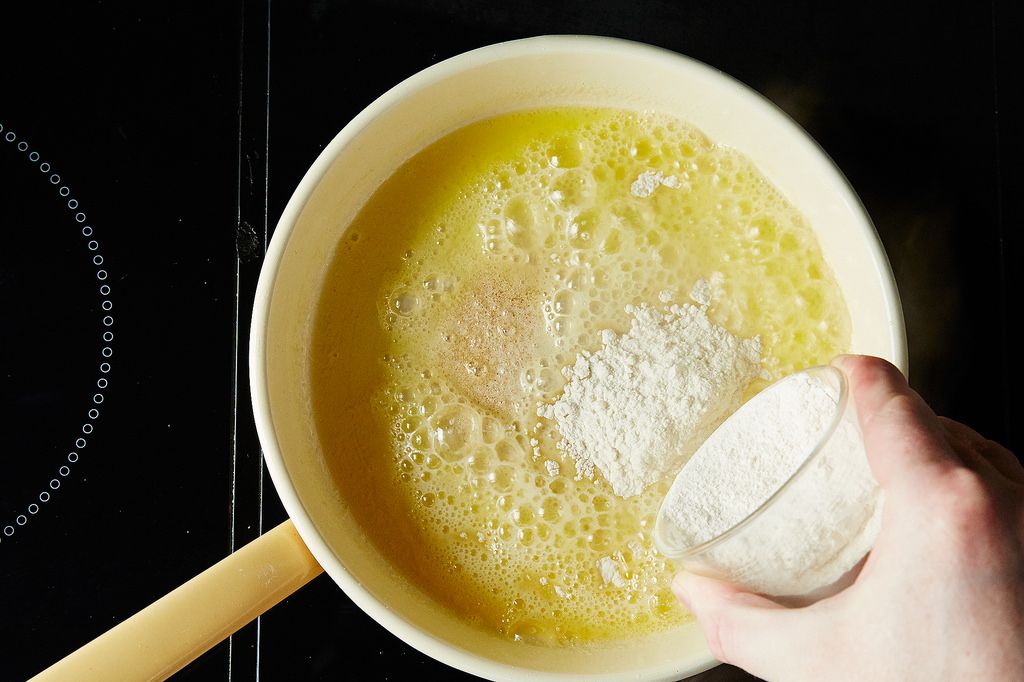
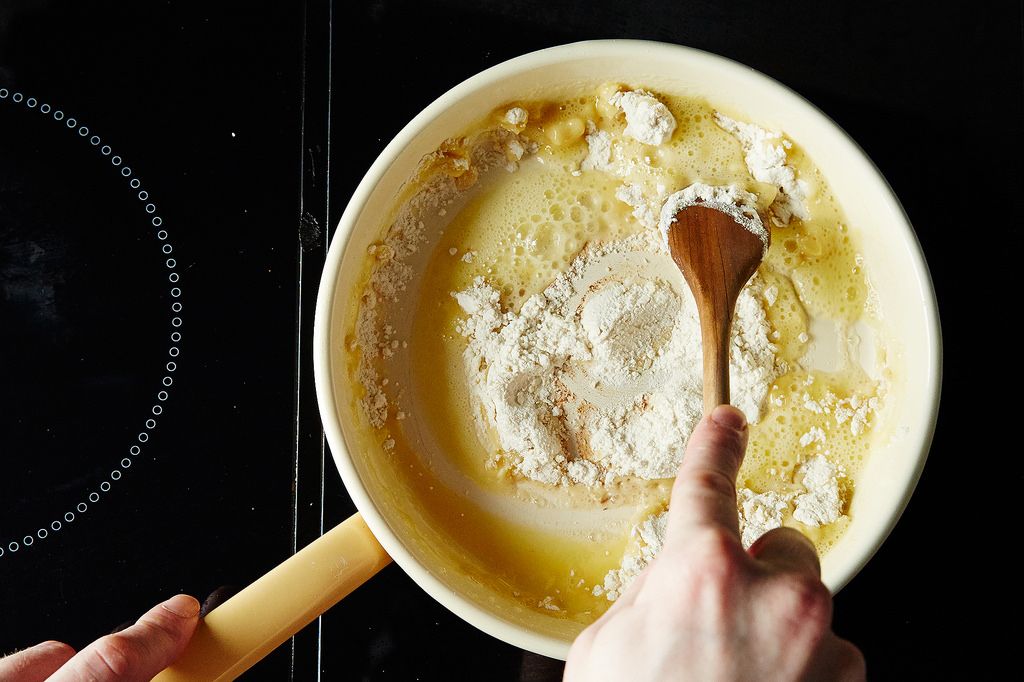
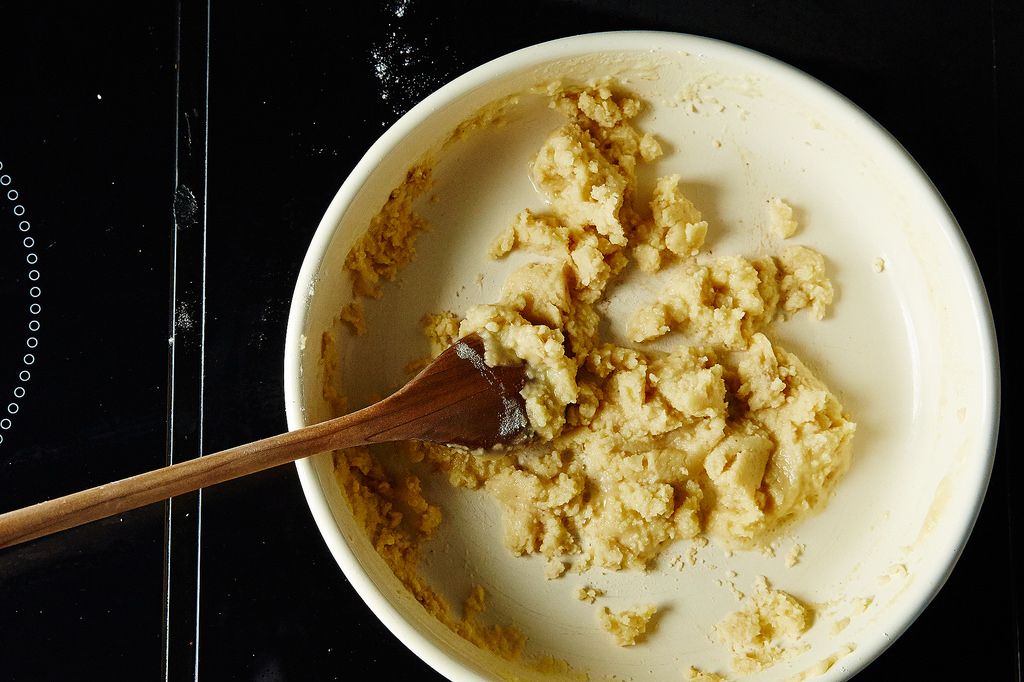

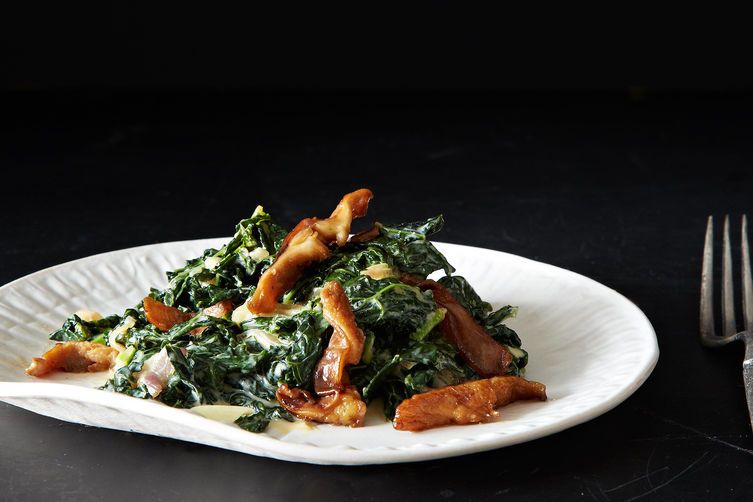
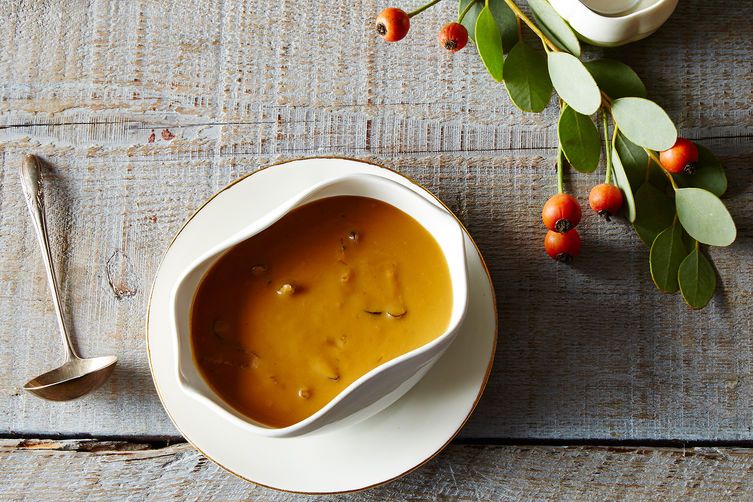
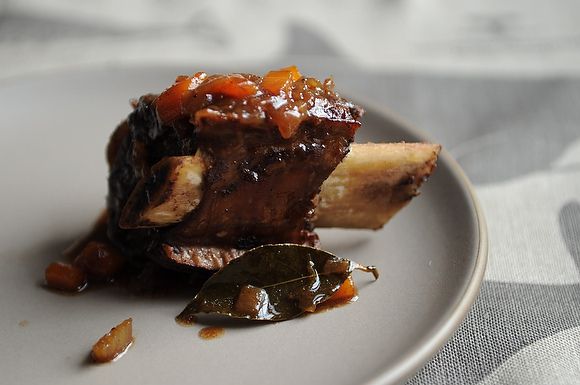
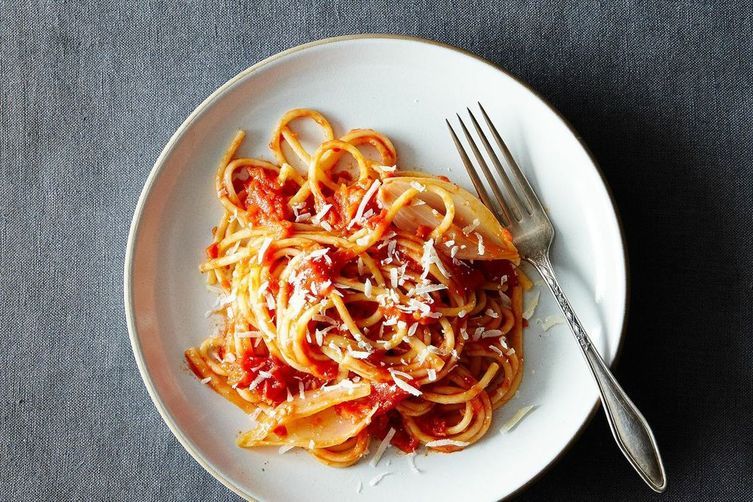
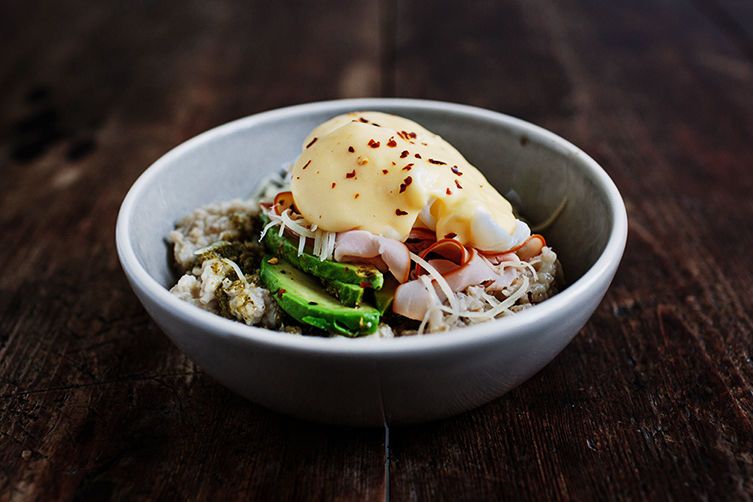

See what other Food52 readers are saying.